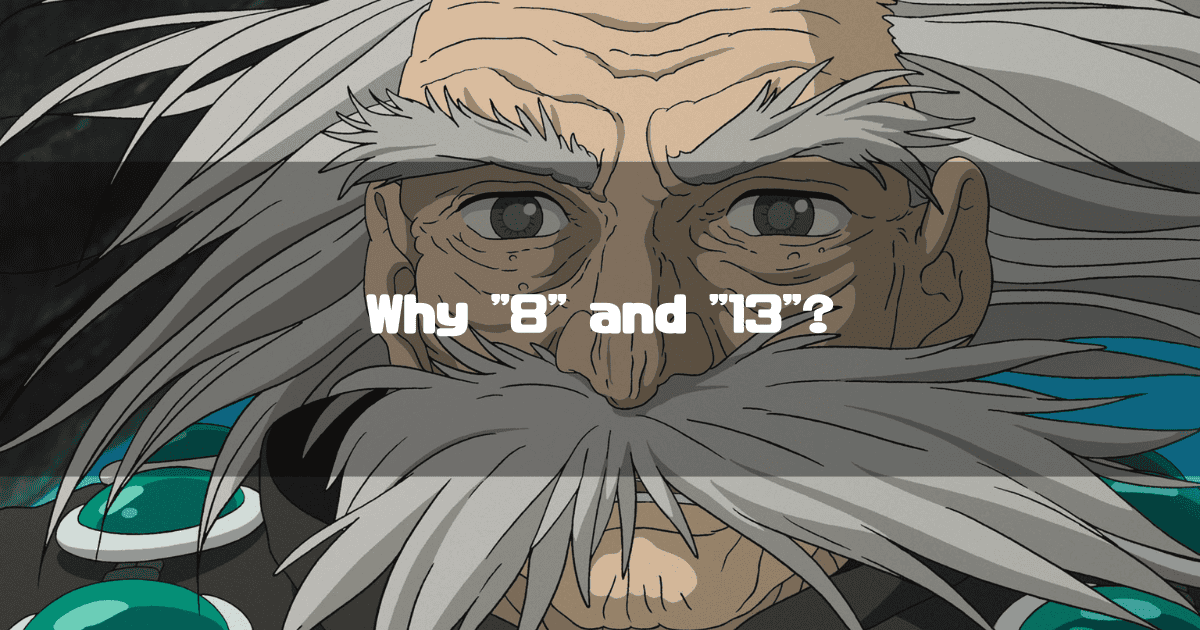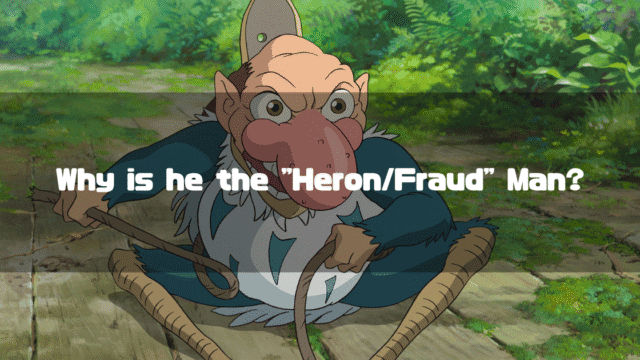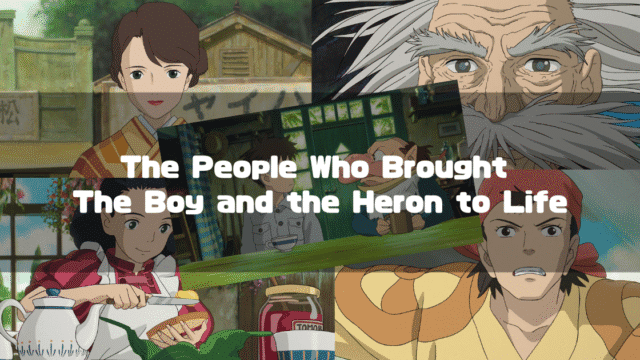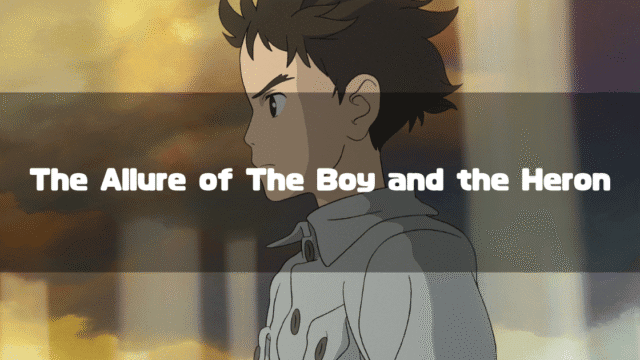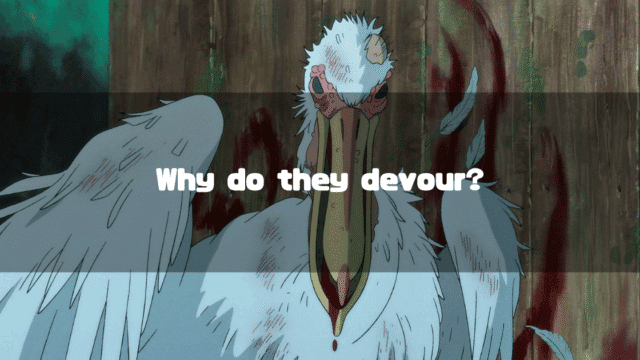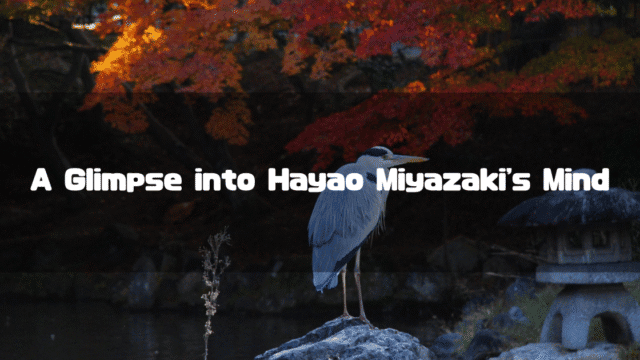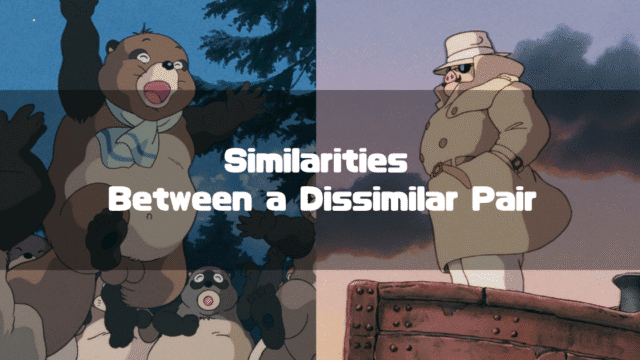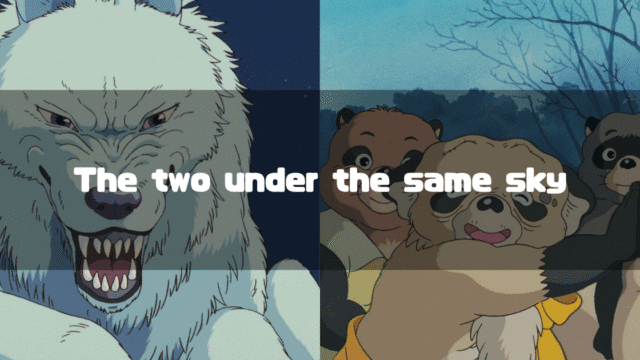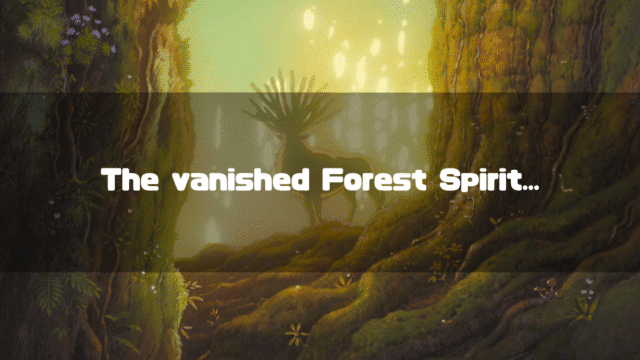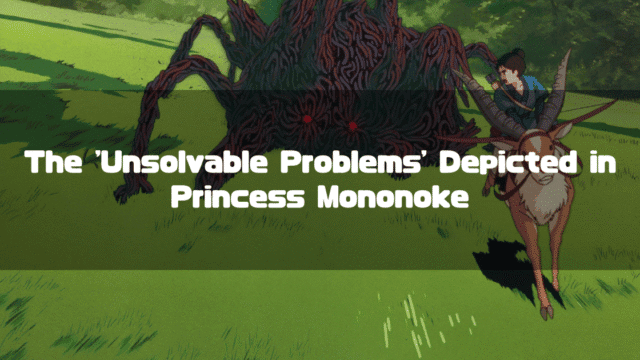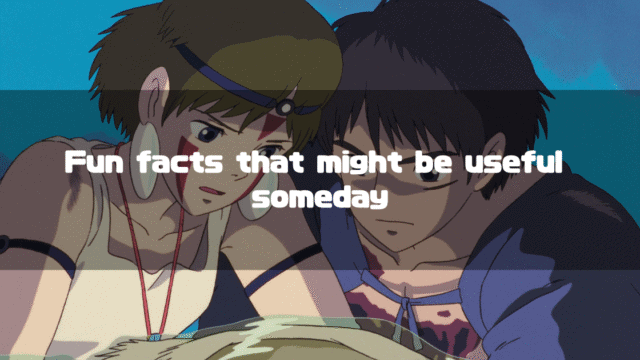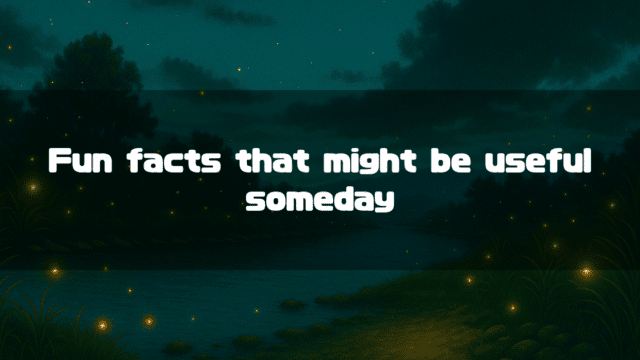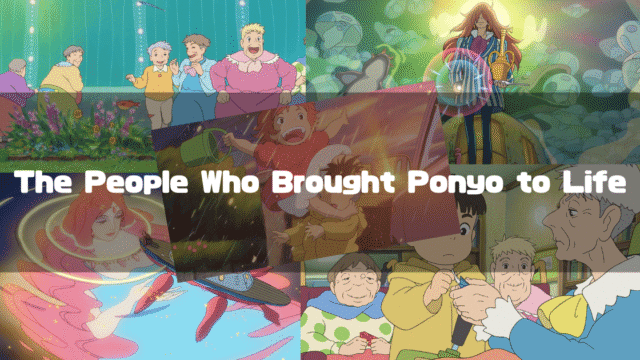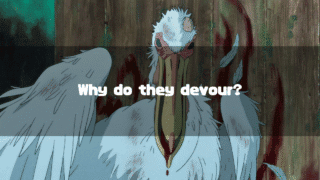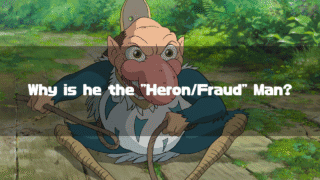The Boy and the Heron(Studio Ghibli Official) is a 2023 animated feature film directed by Hayao Miyazaki.
This time, I would like to consider the meaning of the “malice-filled stones” depicted in the main story of the film.
As producer Toshio Suzuki has mentioned in various places, this work is an autobiographical piece by Director Miyazaki. And considering the flow of the main story, it seems almost obvious that the “13 malice-filled stones” represent the works that Director Miyazaki has created.
Basically, that explanation is sufficient, but the numbers “8” and “13” are nagging at me. You might be wondering, “What does ‘8’ refer to?” In the scene at the end of the story where the Granduncle shows the 13 stones to Mahito, you can see the “collapsing pile of stones” that the Granduncle himself has already stacked, and the number of stones stacked there is eight.
It’s just a number, but it’s surprisingly tricky. No matter how you count the works of Ghibli, Miyazaki, and Takahata from various perspectives, it’s hard to get them to add up to “8” and “13.” However, I’ve found that from a certain perspective, these numbers match up.
This time, I want to unravel what these numbers, “8” and “13,” meant. The hint lies in the relationship between Hayao Miyazaki and Isao Takahata, who is the model for the Granduncle. First, let’s look back at that.
*This article is an English translation of the original Japanese article, 【君たちはどう生きるか】冷たい8個の石と13個の石は何を意味するのか-「8」と「13」の数字に込められた思いを考察-.
Let an AI walk you through the highlights of this post in a simple, conversational style.
-
The Granduncle and the Malice-filled Stones—A Symbol of a Harsh Creative Environment
The Granduncle is a projection of both Isao Takahata and Hayao Miyazaki, and the tower and the world below symbolize Studio Ghibli and Miyazaki’s mind. The malice-filled stones are the past works themselves, built through an arduous creative process. -
The Numbers “8” and “13”—A Boundary Between Collaborative and Solo Works
The 8 stones represent the 8 works collaborated on with Isao Takahata, while the 13 stones represent the 13 works Takahata was not involved in. The act of stacking stones is a device to visualize the achievements and burdens of creation. -
Mahito’s Refusal and the Parakeet King—A New Start from Self-Criticism
The scene where Mahito refuses the 13 stones can be seen as Hayao Miyazaki’s self-criticism of his past methods, but the act of ultimately taking a stone home shows the new creative determination of “the man who is not finished,” Hayao Miyazaki.
An Analysis of the Meaning of the Numbers of the 8 Malice-filled Stones and 13 Malice-filled Stones
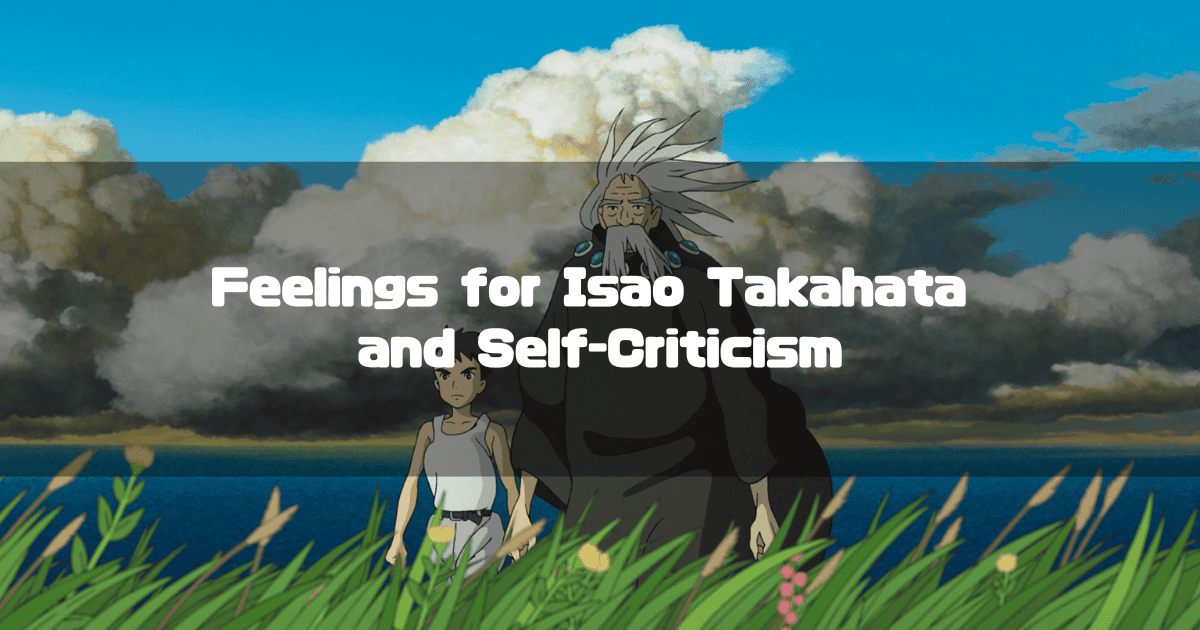
What the Granduncle Symbolizes – The Relationship Between Hayao Miyazaki and Isao Takahata and Their Production Chronology –
The Model for the Granduncle and the Tower
To consider what the number of malice-filled stones means, it’s necessary to think about what the Granduncle and the “world below” symbolize. I’ve written about this in detail in What Do the Numerous Parakeets and Pelicans Mean? #The Granduncle’s Tower and the World Below -Preparing to Understand the Film-, citing remarks from documentaries and interviews, but the summary is as follows.
The Boy and the Heron is a work with strong autobiographical elements from director Hayao Miyazaki, and
- Ghibli producer Toshio Suzuki has likened the “tower” to “Ghibli,” and the entire work can be considered to symbolize Hayao Miyazaki’s mind and creative world.
- The protagonist, Mahito, is depicted as Hayao Miyazaki’s alter ego (the other self he wanted to be).
While the Granduncle in the film is explicitly stated to be modeled after director Isao Takahata,
- He is not just a model; Hayao Miyazaki himself is also projected onto him.
- Bearing the element of “creation,” the Granduncle is also layered with Hayao Miyazaki’s views on life and his struggles.
The relationship between Hayao Miyazaki and Isao Takahata can be summarized as follows:
- Isao Takahata was a “master” who discovered Hayao Miyazaki’s talent, and they worked together from a young age.
- While they held mutual respect, differences in their creative philosophies emerged, and they would sometimes strongly criticize each other.
Based on this, it can be understood that the Granduncle depicted in The Boy and the Heron is not just a projection of Isao Takahata, but a being that also symbolizes Hayao Miyazaki himself and his creative life.
Furthermore, as summarized in What Do the Parakeets and Pelicans Mean? #Hayao Miyazaki’s Statement in the Documentary, Hayao Miyazaki’s animation production environment was harsh, to the point that Miyazaki felt he “lost friends” as a result.
Isao Takahata’s production environment was also harsh, and Toshio Suzuki recounts a powerful story in Ghibli Textbook 19: The Tale of the Princess Kaguya(ジブリの教科書 19 かぐや姫の物語, in Japanese) (as a reminiscence of Yoshifumi Kondō, the director of Whisper of the Heart):
On the night we visited Sendai for the Whisper of the Heart campaign, his first and last directorial work, he started talking about Mr. Takahata and couldn’t stop. “Mr. Takahata tried to kill me. Just thinking about him still makes my body tremble.” He said this and cried for over two hours.
(Original Text in Japanese)
最初で最後の監督作となった『耳をすませば』のキャンペーンで仙台を訪れた日の夜、高畑さんのことを話しだしたら、止まらなくなりました。「高畑さんは僕のことを殺そうとした。高畑さんのことを考えると、いまだに体が震える。」そういって二時間以上、涙を流していました。
Quoting only this passage is indeed “taking it out of context,” so I encourage you to research more about Director Takahata, but I think it still gives a glimpse of the harshness of Isao Takahata’s animation production sites.
However, I believe it captures one aspect of the feelings of those who worked with Isao Takahata.
Based on the above, you can probably understand why the stones the Granduncle stacked and collected were described as “malice-filled.” Although they were excellent and beautiful works, the path to creating them was extremely harsh.
And Hayao Miyazaki worked with such a person. To be honest, I feel a little more preparation is needed, but I think you can understand my point to some extent now.
Production Chronology of Isao Takahata and Hayao Miyazaki
As a supplement to the relationship between Hayao Miyazaki and Isao Takahata reviewed above, let’s look back at their production chronology.
| Release Year | Title | Production | Hayao Miyazaki’s Role | Isao Takahata’s Role |
|---|---|---|---|---|
| 1968 | Horus: Prince of the Sun | Toei Animation | Key Animation, Art Setting, Scene Design | Director |
| 1972 | Panda! Go, Panda! | A Production | Concept, Screenplay, Scene Setting, Key Animation | Director |
| 1973 | Panda! Go, Panda!: The Rainy-Day Circus | A Production | Concept, Screenplay, Scene Setting, Key Animation | Director |
| 1974 | Heidi, Girl of the Alps | Zuiyo Eizo | Scene Setting, Screen Composition | Direction, Director |
| 1976 | 3000 Leagues in Search of Mother | Nippon Animation | Scene Setting, Layout | Direction, Director |
| 1978 | Future Boy Conan | Nippon Animation | Original Story, Screenplay, Storyboard, Director | — |
| 1979 | Lupin the 3rd: The Castle of Cagliostro | Tokyo Movie Shinsha | Director, Screenplay | — |
| 1979 | Anne of Green Gables | Nippon Animation | Scene Setting, Screen Composition | Director |
| 1984 | Nausicaä of the Valley of the Wind | Topcraft → Ghibli Preparation Office | Original Story, Screenplay, Director | Producer |
| 1986 | Castle in the Sky | Studio Ghibli | Original Story, Screenplay, Director | Producer |
| 1988 | My Neighbor Totoro | Studio Ghibli | Original Story, Screenplay, Director | — |
| 1988 | Grave of the Fireflies | Studio Ghibli | — | Director, Screenplay |
| 1989 | Kiki’s Delivery Service | Studio Ghibli | Screenplay, Director | Music Direction |
| 1991 | Only Yesterday | Studio Ghibli | Executive Producer | Director |
| 1992 | Porco Rosso | Studio Ghibli | Original Story, Screenplay, Director | — |
| 1994 | Pom Poko | Studio Ghibli | Planning | Director, Screenplay |
| 1995 | Whisper of the Heart | Studio Ghibli | Planning, Screenplay, Storyboard, Executive Producer | — |
| 1997 | Princess Mononoke | Studio Ghibli | Original Story, Screenplay, Director | — |
| 1999 | My Neighbors the Yamadas | Studio Ghibli | — | Director, Screenplay |
| 2001 | Spirited Away | Studio Ghibli | Original Story, Screenplay, Director | — |
| 2004 | Howl’s Moving Castle | Studio Ghibli | Director, Screenplay | — |
| 2008 | Ponyo | Studio Ghibli | Original Story, Screenplay, Director | — |
| 2011 | From Up on Poppy Hill | Studio Ghibli | Planning, Screenplay | — |
| 2013 | The Wind Rises | Studio Ghibli | Original Story, Screenplay, Director | — |
| 2013 | The Tale of the Princess Kaguya | Studio Ghibli | — | Director, Screenplay |
| 2023 | The Boy and the Heron | Studio Ghibli | Original Story, Screenplay, Director | — |
You can see that their involvement with each other became extremely thin after Only Yesterday, which was produced at Studio Ghibli. At least from a filmmaking perspective, they don’t seem to have participated as “main staff” in each other’s works.
Now, let’s consider the meaning of the numbers “8” and “13.”
The Meaning of the Numbers “8” and “13”
Based on the relationship between Hayao Miyazaki and Isao Takahata summarized above, I will now consider what the numbers “8” and “13” meant. First, here is my conclusion.
Conclusion – The Number of Works Co-created with Isao Takahata and Those That Were Not –
To summarize the conclusion first, the 8 stones are the following 8 works:
| Title | Release Year | Hayao Miyazaki’s Role | Isao Takahata’s Role |
|---|---|---|---|
| Horus: Prince of the Sun | 1968 | Key Animation, Art Setting, Scene Design | Director |
| Panda! Go, Panda! | 1972, 1973 | Concept, Screenplay, Scene Setting, Key Animation | Director |
| Heidi, Girl of the Alps | 1974 | Scene Setting, Screen Composition | Direction, Director |
| 3000 Leagues in Search of Mother | 1976 | Scene Setting, Layout | Direction, Director |
| Anne of Green Gables | 1979 | Scene Setting, Screen Composition | Direction, Director |
| Only Yesterday | 1991 | Executive Producer | Director |
| Nausicaä of the Valley of the Wind | 1984 | Original Story, Screenplay, Director | Producer |
| Castle in the Sky | 1986 | Original Story, Screenplay, Director | Producer |
Panda! Go, Panda! is treated as a single work, combining Panda! Go, Panda! released in 1972 and Panda! Go, Panda!: The Rainy-Day Circus released in 1973.
The 13 stones are the following 13 works:
| Title | Release Year | Hayao Miyazaki’s Role |
|---|---|---|
| Future Boy Conan | 1978 | Original Story, Screenplay, Storyboard, Director |
| Lupin the 3rd: The Castle of Cagliostro | 1979 | Director, Screenplay |
| My Neighbor Totoro | 1988 | Original Story, Screenplay, Director |
| Kiki’s Delivery Service | 1989 | Screenplay, Director |
| Porco Rosso | 1992 | Original Story, Screenplay, Director |
| Whisper of the Heart | 1995 | Planning, Screenplay, Executive Producer |
| On Your Mark | 1995 | Original Story, Screenplay, Director |
| Princess Mononoke | 1997 | Original Story, Screenplay, Director |
| Spirited Away | 2001 | Original Story, Screenplay, Director |
| Howl’s Moving Castle | 2004 | Screenplay, Director |
| Ponyo | 2008 | Original Story, Screenplay, Director |
| From Up on Poppy Hill | 2011 | Planning, Screenplay |
| The Wind Rises | 2013 | Original Story, Screenplay, Director |
The two works, Pom Poko and The Tale of the Princess Kaguya, are not included in the lists above. I will explain the reasons for this, including why the tables are arranged as they are.
Explanation – What Mahito’s Decision and the Parakeet King Mean –
When considering the numbers “8” and “13,” one of the important things is that the Granduncle is a projection of not only Isao Takahata but also Hayao Miyazaki.
If you think of the Granduncle as only Takahata or only Miyazaki, the meaning of the numbers of the malice-filled stones becomes unclear.
In the end, the 8 works listed above are “works that Hayao Miyazaki made with Isao Takahata,” and the 13 works are “works that Isao Takahata was not involved in.” To be precise, there is a story that Isao Takahata “helped” with Future Boy Conan, and he was involved in Kiki’s Delivery Service as a music director, but since his role was “music,” I have excluded it this time.
From the perspective of “co-created with Isao Takahata,” there is also the live-action documentary The Story of Yanagawa’s Canals (1987, directed by Isao Takahata, produced by Hayao Miyazaki), but I have excluded it because it is a live-action work.
Also, the “13 stones” list includes works that Hayao Miyazaki did not necessarily direct, but this is the same situation as the “8 stones” list including works that Isao Takahata did not direct. Also, for Whisper of the Heart, he did the storyboards, and for From Up on Poppy Hill, he had the important role of screenwriter, so I think it would be more problematic not to consider them as works that Hayao Miyazaki was involved in.
Furthermore, Pom Poko and The Tale of the Princess Kaguya, although directed by Isao Takahata, are excluded from the “8” and “13” candidates because Hayao Miyazaki’s involvement was minimal.
The 8 stones depicted as the “malice-filled stones” stacked by the Granduncle near the end, but if you count the stones on the table depicted before that, there are a total of 10. I think these could be seen as Pom Poko and The Tale of the Princess Kaguya, but in some scenes, it looks like there are 9, so the number of stones the Granduncle stacked is quite ambiguous (there were a total of 11 stones scattered when the “world below” began to collapse).
Now, I think it’s somewhat clear that the “malice-filled stones” are the works that were painstakingly created in a harsh environment, but the problem is that they were divided into “8” and “13.”
A hint to understanding this division is the depiction of the Granduncle trying to give Mahito the 13 stones he collected, Mahito refusing them, and finally the Parakeet King stacking them.
Regarding the Parakeet King, Toshio Suzuki also testifies as follows in an interview in SWITCH Vol.41 No.9 Special Feature: The Adventure Around Ghibli:
Miya-san says, “The Parakeet King is me.” And he said, “The other self I wanted to be is Mahito.”
(Original Text in Japanese)
宮さんは「インコ大王は自分だ」と言う。そして「なりたかったもう一人の自分が眞人だ」と言っていました。
Since the Parakeet King, who is Hayao Miyazaki’s alter ego, stacked them, the “13 stones” are the works that Hayao Miyazaki created, and Mahito’s refusal of the stones would be a self-criticism of the situation and methods used to create those 13 works.
And since the “8 stones” were stacked by the Granduncle, and the Granduncle is a projection of both Hayao Miyazaki and Isao Takahata, I think that would mean they are the works they created together.
In the end, Mahito brings the “malice-filled stone” into the real world while refusing it, but the meaning of that could be seen as a “determination to create works in a new form,” couldn’t it?
The Boy and the Heron is an autobiographical work by Hayao Miyazaki, and much self-criticism can be seen. However, it ultimately becomes a new starting point, and I think it has become a work that truly symbolizes “the man who is not finished, Hayao Miyazaki.”
The above is my idea of the meaning of the numbers “8” and “13” of the “malice-filled stones.” I first had the numbers and then thought of various things to fit them, so I’m sure there are other opinions. However, I don’t think it’s that far off the mark.
What do you all think is the meaning of the numbers “8” and “13”?
The images used in this article are from the Studio Ghibli Works Still Images collection.
About the Author
Recent Posts
- 2025-10-21
Indiana Jones and the Dial of Destiny(2023): Full Synopsis & Analysis: Indy’s True Motive and the Enigma of Helena - 2025-10-15
Indiana Jones and the Dial of Destiny(2023):Historical Background-WWII, the Real Dr. Schmidt, the Siege of Syracuse, and the Antikythera Mechanism - 2025-10-08
Why Does Children Who Chase Lost Voices Feel So Ghibli-esque? [Makoto Shinkai’s “Tale of Farewell”] - 2025-10-07
5 Centimeters per Second: Characters, Voice Actors, Character Analysis and Character Map - 2025-10-06
5 Centimeters per Second: Full Synopsis, Analysis, Ending Explained & Character Map (Spoilers)

